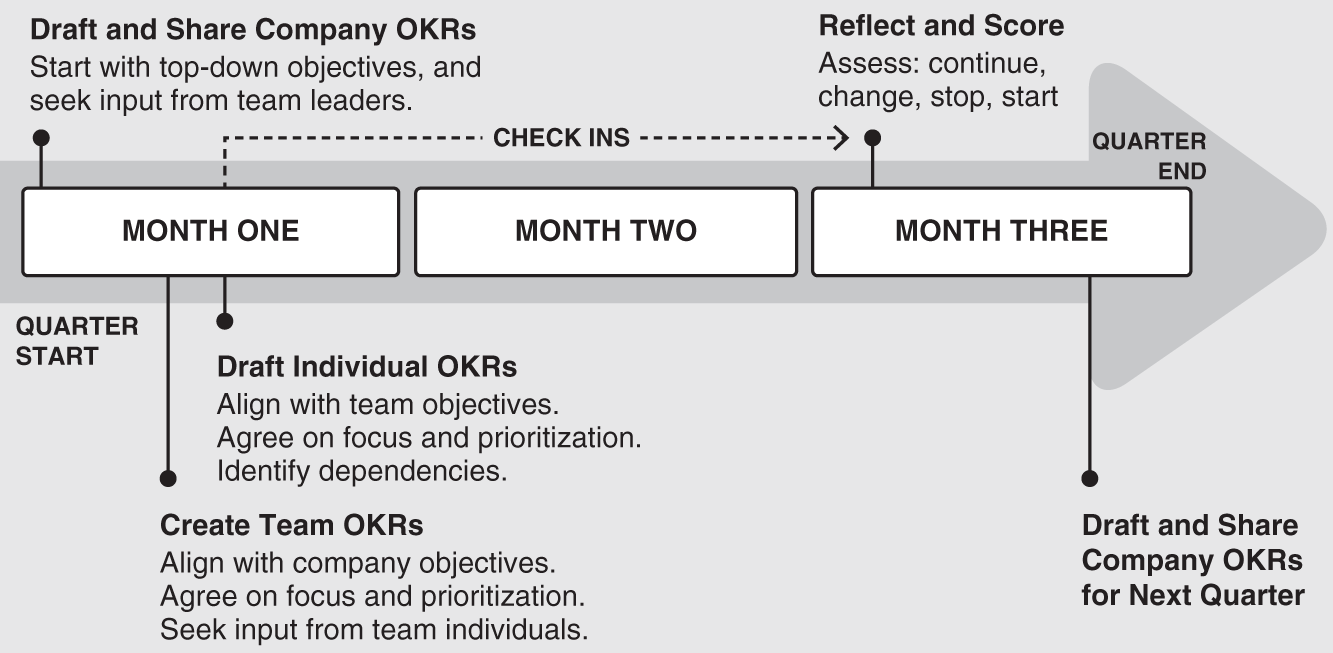CHAPTER 17Key Business Rhythm: Quarterly OKR Planning

For the most part, OKRs are planned on an annual basis and a quarterly basis, with more emphasis on the quarterly process. This makes the quarterly review process critical.
End‐of‐Quarter OKR Scoring and Reflections

Who needs to be involved: The leader who owns an OKR and the team responsible for helping reach it.
What needs to happen: The end of quarter review is an opportunity for teams, managers, and individuals to review their progress and reflect on the performance of the previous quarter. These meetings are when OKRs are assessed and scored.
The goal of the quarterly review is to:
- Assess progress based on a goal and assign a score.
- Use a scale of 0.0–1.0.
- Scoring can be done based on key results.
- Take into consideration whether the goal was stretch or committed.
- Support the review and discussions with teams to identify wins, losses, and lessons learned.
- Collaborate with managers on quarter‐end meetings to share graded objectives and key results, explain results, and outline adjustments for the next quarter.
“One of the things that is really important and key to a goal‐setting framework is you have to stay focused on the future and not beat yourself up over the past,” says Josh Hug, COO and co‐founder of Remitly. ...
Get OKRs for All now with the O’Reilly learning platform.
O’Reilly members experience books, live events, courses curated by job role, and more from O’Reilly and nearly 200 top publishers.

